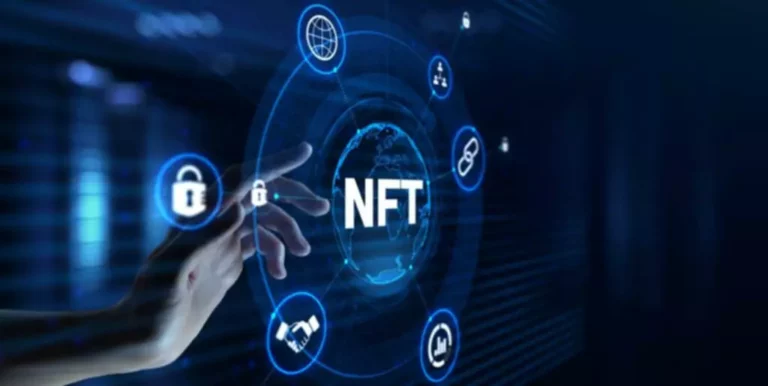Lastly, Direct Memory Access (DMA) acts as a visitors officer for your computer’s knowledge. It relieves the main processor thus making it easier for units corresponding to hard drives and graphics cards to communicate with the memory of computers. Therefore, information switch becomes faster and your computer can perform extra tasks at a time without being slowed down. There are a number of forms of DMA and every mode transfers data very intelligently. Some computer bus architectures incorporate a functionality known as Direct Memory Access whereby data could be transferred instantly from an connected gadget like a disk drive to the system’s major reminiscence in the motherboard without essentially passing by way of the CPU.

When related to an NC, the pc system should depend on the CPU to assist in knowledge transfer. Additionally, whereas using DMA for data transfer, we are ready to encounter the cache coherence drawback. The major benefit of DMA is to hurry up data transfer and memory operations. Hence, it assists the working system in distributing the load correctly. Imagine a CPU outfitted with a cache and an exterior memory that might be accessed immediately by units using DMA.
Direct Reminiscence Entry (dma) Controller In Computer Architecture
The motivation is to off-load a number of input/output interrupt and information copy duties from the CPU. Distributed techniques sometimes utilize them, significantly in situations involving high efficiency computing and networks that demand very low latency and throughput. It is commonly employed inside connections where it facilitates speedy switch of information at a pace between system memory and peripheral, for instance on networks and in instances of storing gadgets. Instead, such transfers operate on account of the interplay between the community adapters. This function is performed by the DMA controller, who, in reality does it sooner and efficiently, particularly for larger blocks. 8257 DMA Controller is a sort of DMA Controller, that when a single Intel 8212 I/O system is paired with it, becomes four channel DMA Controller.
When BG (bus grant) enter is 1, the CPU has relinquished the buses and DMA can communicate directly with the reminiscence. Direct Memory Access makes use of hardware for accessing the reminiscence, that hardware known as a DMA Controller. It has the work of transferring the information between Input Output units and main memory with very much less interplay with the processor. The direct Memory Access Controller is a management unit, which has the work of transferring knowledge. Usually, a specified portion of reminiscence is designated as an area for use for direct reminiscence entry.
In different such buses standards, memory entry may be through the full range of addressable areas. With regards to this, peripheral element interconnect has the ability of utilizing a bus grasp where the CPU provides orders on I/O management to the PCI controller. The process of information management avoids overloading the computer’s CPU with many requests for external devices, which prevents the performing of other operations by the pc. A person can operate a CPU to start an information transfer on DMA with one other hooked up equipment whereas other works are being executed in parallel.

An much more advanced model of the DMA controller is the arbitrated-ended DMA controller. Finally, interleaved DMA controllers are fancy DMA controllers that learn from one memory tackle whereas writing to another completely different reminiscence handle. The primary https://www.xcritical.com/ operate of a DMA controller is to transfer data between reminiscence and an auxiliary system directly, without involving the CPU. Some typical operations embody studying data from a sensor and storage gadget.
Dma: Its Significance And Purposes Defined
The page register was additionally rewired to deal with the total sixteen MB reminiscence address area of the CPU. Multiple hardware methods undertake Direct Memory Access, corresponding to disk drive controllers, graphics playing cards, network cards, and sound playing cards. Compared to computer systems without Direct Memory Access channels, computer systems with DMA channels can switch data between units with much less CPU overhead.

Each of your disk reads and writes, every switch to your graphics or community card will often involve DMA. 8237 DMA Controller is a sort of DMA Controller which has a flexible number of channels however usually works on four Input-Output channels. In these present channels, the channel must be given the best priority to be decided by the Priority Encoder. Each channel in the 8237 DMA Controller must be programmed separately. However, there is some latency involved because the CPU should arrange the transfer and control the DMA controller. It communicates throughout the system and transfers data among the different inner parts of it.
Dma Controller
It incorporates two 16-bit registers, one is DMA Address Register and the other one is Terminal Count Register. RDMA is useful in applications that require fast and big parallel high-performance computing clusters and data middle networks. For instance, RDMA is useful when analyzing massive information, in supercomputing environments and for machine learning that requires low latencies and high transfer rates.
Now let’s assume we’re about to switch knowledge from an I/O device to memory. Additionally, the CPU increments the worth of this system counter by one. Data is continuously transferred between computer systems and devices in the modern digital world. However, laptop methods are restricted to a selected data price at which they will course of information. Therefore, knowledge processing has become a bottleneck with the proliferation of assorted units, corresponding to sensors, printers, and high-speed modems.
Direct Memory Access may also be used for “memory to memory” to repeat or transfer data in reminiscence. It can transfer expensive memory operations (such as giant copies or scatter-gather operations) from the CPU to a dedicated DMA engine. DMA is important in network-on-chip and reminiscence computing architectures. RDMA creates point to level channels of information switch between computers in a distributed network permitting for direct memory-to-memory communication which is suitable for distributed computing and storage architectures.
The CPU sends a sign to the DMA controller to start transferring data, and it sets up the addressing of the system memory as nicely as the read/write modes within the process. As an instance, on an Intel Core-based PC, the southbridge will forward the transactions to the reminiscence controller (which is integrated on the CPU die) utilizing DMI, which can in turn convert them to DDR operations and send them out on the memory bus. As a result, there are fairly a selection of steps involved in a PCI DMA switch; nonetheless, that poses little drawback, since the PCI device or PCI bus itself are an order of magnitude slower than the rest of the elements (see listing of gadget bandwidths). Compared to conventional DMA, RDMA tends to have less latency because the processor just isn’t involved in the knowledge transfers.
DMA is a method the place you presumably can move memory round without involving the primary CPU. This was a huge win for old gaming hardware as an awful lot of time can be spent merely shuffling graphics information across the screen reminiscence. Offloading this task to customized silicon meant the CPU had extra time to do rather more fascinating and computationally costly things. The precise copying itself could be done much more rapidly too, which means smoother scrolling and so on. DMA describes the access of parts, aside from the CPU, on (a CPU’s) reminiscence. Further data may be discovered on the corresponding Wiki web page and subsequent to infinite other sources on the web.
Kinds Of Dma
Instead, it encodes one (and only one) command for any given transaction. This means instead of a DMA controller that transfers memory between the I/O gadget and memory, the I/O gadget itself transfers data directly to or from reminiscence. As initially defined, DMA controllers relied on the fact that the bus had separate traces to claim for reminiscence read/write, and I/O read/write. The DMA controller took benefit direct market access platform of that by asserting each a memory read and I/O write (or vice versa) on the identical time. The DMA controller then generated successive addresses on the bus, and data was read from reminiscence and written to an output port (or vice versa) each bus cycle. During transferring the data process, involves processors, reminiscence, and input-output gadgets.

The separation of reminiscence types is significant since system memory operates at a higher velocity than I/O reminiscence. The DMA controller directs data between gadgets and system reminiscence, making the operation between the 2 units look like a single operation. Internally, a multichannel DMA engine is usually present in the system to carry out a quantity of concurrent scatter-gather operations as programmed by the software. These symbols, seen on hardware schematics of pc techniques with DMA functionality, represent electronic signaling traces between the CPU and DMA controller. A gadget that uses DMA must be configured to make use of each lines of the assigned DMA channel. DMA may additionally be used for “reminiscence to reminiscence” copying or moving of data within reminiscence.